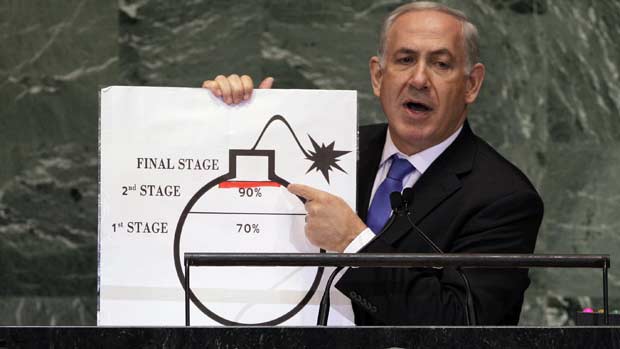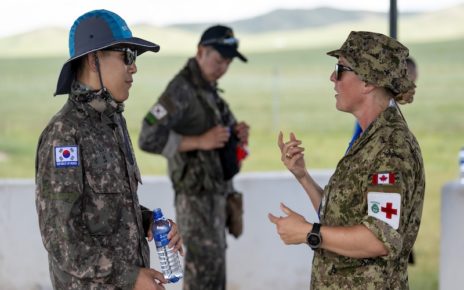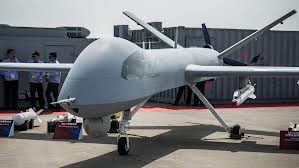
Following his December 1953 speech, made to the UN General Assembly at the height of the Cold War, President Dwight D. Eisenhower warned against the dangers of nuclear war. Eisenhower’s speech took place just eight years after the American attacks on Hiroshima and Nagasaki, and would precede the Cuban Missile crisis by just over nine years, thereby serving as the pinnacle of the post-war nuclear scare. Subsequent to his address, the United States launched the “Atoms for Peace” program under the logic of nuclear deterrence, where Washington supplied highly enriched uranium to 26 countries, including apartheid South Africa, Franco’s Spain, the Shah’s Iran, Pakistan, India, and Israel.
The Cuban Missile crisis, the attacks on Nagasaki and Hiroshima, and the Indian nuclear weapons test have been the most significant nuclear developments to date, and inform many of the fears surrounding proliferation in the 21st Century. It is only in this context that an educated and unbiased analysis of the Iranian nuclear program can be conducted.
In 1962, the US and the Soviet Union engaged in the Cuban Missile Crisis, a 13 day nuclear stand-off that brought the world to the brink of nuclear war, after which Secretary of State Dean Rusk purportedly whispered to National Security Advisor McGeorge Bundy, “we’re eyeball to eyeball, and I think the other fellow just blinked”.
After India set off its first nuclear weapon, the Smiling Buddha, on May 18, 1974, which was built with the help of a reactor in Canada and heavy water from the United States, the US reversed its initial stance on proliferation. At this point, the US began advocating for Argonne fuel as a replacement for enriched uranium internationally, although it never ceased domestic uranium enrichment. President Clinton went so far as to OK plans to build a $3 billion research reactor complex in Tennessee in 1993, which would use weapons-grade fuel, serving to pose a serious contradiction to the established American stance on nuclear armament.
The first set of diplomatic talks between Iran and the P5+1 countries, which included the 5 permanent countries of the Security Council, namely the United States, Russia, China, the United Kingdom, and France, plus Germany, when held in August 2007, where Iran agreed to suspend all nuclear work which was related to nuclear weapons development.
With an outline agreement due on March 31, 2015, it is necessary to outline the American, Israeli, and Iranian expectations for a deal. Essentially, the US wants to limit Iranian enrichment centrifuges to under 5,000 and subject existing centrifuges to “rigorous inspection”. It also wants the IAEA to destroy most of Tehran’s stockpiles and Iran to impose a “freeze of at least 10 years on sensitive nuclear activity”. Israel has argued that Tehran has a history of hiding its intentions for nuclear fuel production, and that an armed Iran would pose a significant threat to the future of Israeli security. Finally, Iran has argued that it has no intention of nuclear armament, and that in order to transition to modernity, it must invest in an industrial-scale nuclear fuel production programme with 190,000 centrifuges.

Israeli claims that Iran wants to launch an apocalyptic and unprovoked nuclear war against the state of Israel are not credible. Since his September 27, 2012, address to the UN General Assembly where he illustrated the “red line” for Iran’s nuclear capability, Netanyahu has been regarded as overly confrontational by moderate to left-wing global media sources. Upon deeper reflection it is easy to see why this is the case. By adopting a game theory analysis, it is evident that “there is no cost-benefit calculation by which an offensive strike would make sense for Iran”. Any nuclear attack on Israel would most likely be met by retaliation from the US.
It is also important not to forget that Israel possesses its own ‘secret’ nuclear arsenal, thereby providing it with a second-strike nuclear capability. In total, Israel, which never signed the Nuclear Non-Proliferation Treaty of 1968, is estimated to have 80 warheads, giving it a capability on par with Pakistan and India, although the state has never openly confirmed or denied the existence of its stockpile. This lack of acknowledgement is so deeply entrenched in Israel’s political identity that when the former speaker of the Knesset, Avraham Burg, declared the official non-disclosure policy as “outdated and childish” in December 2008, he was accused of treason by the Legal Forum for the Land of Israel, a member of the Israeli right-wing camp. Israel’s failure to recognize the Iranian right to protect its own nationhood, as well as Israel’s failure to display openness about its nuclear stockpile, makes its stance on Iran rather hypocritical.
Netanyahu’s 2012 warning that Iran was “just a few months away” from producing a nuclear bomb has been proven incorrect. Not only would weaponization require 6 to 18 months of complex chemical conversions and testing, the timeline fails to take into account the need to produce two bombs, i.e. one for testing and one for the stockpile. Assuming that Iran would create only one bomb just to use on Israel is equally erroneous, as explained above.




